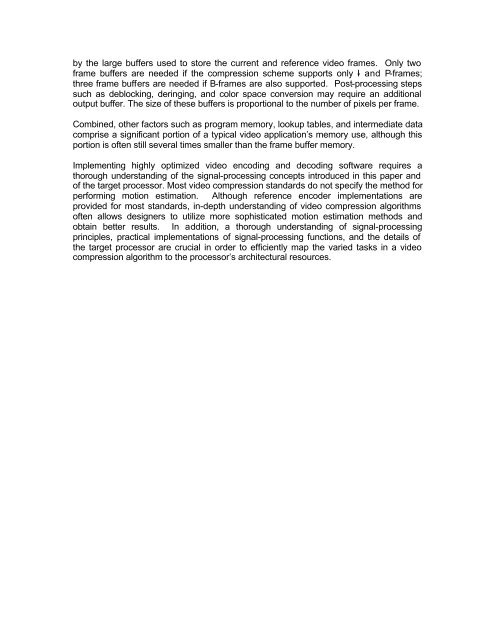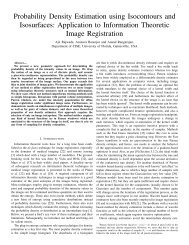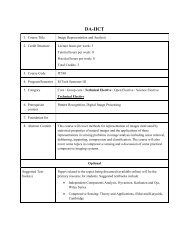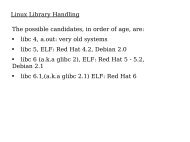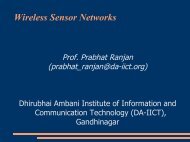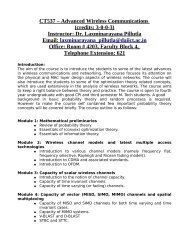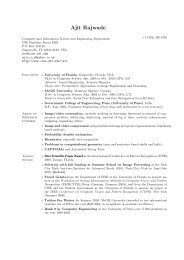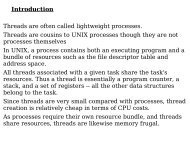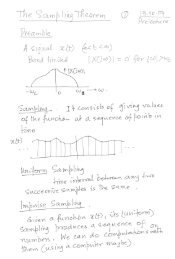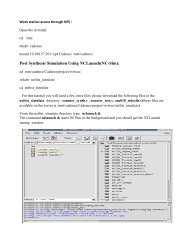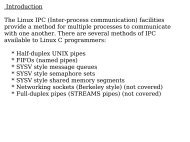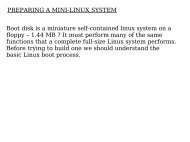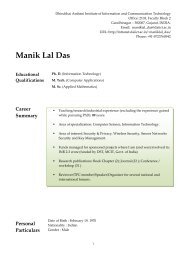ESC-210: Introduction to Video Compression - DAIICT Intranet
ESC-210: Introduction to Video Compression - DAIICT Intranet
ESC-210: Introduction to Video Compression - DAIICT Intranet
Create successful ePaper yourself
Turn your PDF publications into a flip-book with our unique Google optimized e-Paper software.
y the large buffers used <strong>to</strong> s<strong>to</strong>re the current and reference video frames. Only two<br />
frame buffers are needed if the compression scheme supports only I- and P-frames;<br />
three frame buffers are needed if B-frames are also supported. Post-processing steps<br />
such as deblocking, deringing, and color space conversion may require an additional<br />
output buffer. The size of these buffers is proportional <strong>to</strong> the number of pixels per frame.<br />
Combined, other fac<strong>to</strong>rs such as program memory, lookup tables, and intermediate data<br />
comprise a significant portion of a typical video application’s memory use, although this<br />
portion is often still several times smaller than the frame buffer memory.<br />
Implementing highly optimized video encoding and decoding software requires a<br />
thorough understanding of the signal-processing concepts introduced in this paper and<br />
of the target processor. Most video compression standards do not specify the method for<br />
performing motion estimation. Although reference encoder implementations are<br />
provided for most standards, in-depth understanding of video compression algorithms<br />
often allows designers <strong>to</strong> utilize more sophisticated motion estimation methods and<br />
obtain better results. In addition, a thorough understanding of signal-processing<br />
principles, practical implementations of signal-processing functions, and the details of<br />
the target processor are crucial in order <strong>to</strong> efficiently map the varied tasks in a video<br />
compression algorithm <strong>to</strong> the processor’s architectural resources.


